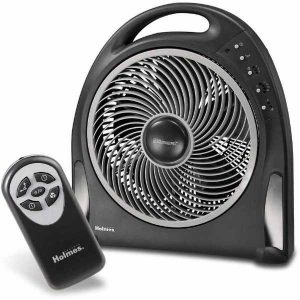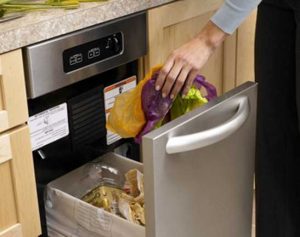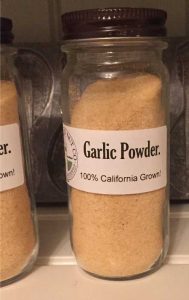An energy vampire is an electrical device that uses electricity while it is turned off. Between 10% and 20% of the average American’s electrical bill goes to pay for energy vampires.
1. Buy appliances that shut themselves off. I have a coffee maker that automatically shuts itself off one hour after it is turned on. Almost all the coffee makers in hotel guest rooms have automatic shutoff timers in them. Hotels buy them to save money on electricity, and more importantly, to reduce the risk of fire. Coffee makers are the cause of a lot of home and office fires. If you leave a coffee maker turned on, eventually the coffee in the carafe will evaporate. After that, the carafe and the heating plate under it will get hotter and hotter. Eventually, coffee maker itself can melt and catch on fire. Coffee makers with automatic shutoff timers in them can be hard to find in stores, but Amazon and many other internet retailers sell them. They are fairly cheap. Amazon sells them for $25 to $40 with free shipping. Search ‘coffee maker’ with the words ‘hospitality’, ‘auto shut-off’, or ‘hotel.’ Many other small appliances have automatic shutoff timers in the as well, like clothes irons.
2. Don’t buy appliances with unnecessary clocks in them. Any appliance or electrical device that has a clock in it or that is programmable is using electricity 24 hours a day, even when it is turned off. Many coffee makers, toaster ovens, pressure cookers, blenders, crock pots, and other small kitchen appliances have clocks in them so they can be programmed to go on and off at preset times. Some people may have use for this feature, like people who get up at the same time every day and wants hot coffee waiting for them; however, most people never program small appliances, and the electricity those appliances use for their clocks and programs is just wasted. Why would anybody program a blender to go on and off at a fixed time?
 3. Don’t buy appliances with unnecessary remote controllers. Any electrical device with a remote controller is also using electricity 24 hours a day, even when it is turned off, so it can receive a signal from the remote. This is called ‘standby mode.’ Now sure, everybody wants the TV to have a remote controller, but what about a table fan? I have a tenant right now who has an electric table fan in his living room with a remote controller. He only uses the fan for a few weeks a year in the summer. I explained to him that his fan is using electricity all the time, even when it is turned off, so it can receive a signal from the remote controller. I suggested that he unplug his fan at the end of summer. I am amazed at the number of household devices that have unnecessary and silly remote controllers. My own desktop computer came with a remote controller, but what good is it? Why would I want to turn on my computer when I am not sitting down in front of it? Among the appliances that I have seen that have useless remote controllers are coffee makers, rice cookers, desk lamps, air fresheners, humidifiers, dehumidifiers, desk lamps, pressure cookers, radios, and toasters. Does anyone really make toast by remote control?
3. Don’t buy appliances with unnecessary remote controllers. Any electrical device with a remote controller is also using electricity 24 hours a day, even when it is turned off, so it can receive a signal from the remote. This is called ‘standby mode.’ Now sure, everybody wants the TV to have a remote controller, but what about a table fan? I have a tenant right now who has an electric table fan in his living room with a remote controller. He only uses the fan for a few weeks a year in the summer. I explained to him that his fan is using electricity all the time, even when it is turned off, so it can receive a signal from the remote controller. I suggested that he unplug his fan at the end of summer. I am amazed at the number of household devices that have unnecessary and silly remote controllers. My own desktop computer came with a remote controller, but what good is it? Why would I want to turn on my computer when I am not sitting down in front of it? Among the appliances that I have seen that have useless remote controllers are coffee makers, rice cookers, desk lamps, air fresheners, humidifiers, dehumidifiers, desk lamps, pressure cookers, radios, and toasters. Does anyone really make toast by remote control?
4. Don’t buy useless electrical products. My father and his brother owned a furniture store in Baltimore called the North Company. My father sold some very silly things. The silliest were the electric paintings, and he sold a lot of them! On the walls of his store were framed paintings, and nearly every painting had an electrical cord that had to be plugged in in order for the painting ‘to work.’ Those electric paintings were expensive. One popular painting was titled ‘The Old Mill’. It was a painting of an old fashioned mill with a water wheel. When you plugged in the painting, the water wheel appeared to turn, the water appeared to flow in the river, and the lights in the mill house lit up. It was the silliest thing you ever saw. My father sold many other paintings that also had to be plugged in in order to work. Customers would come into the store, look at a painting on the wall, and ask: “Ain’t that a pretty painting. What does it do?” To me, that always seemed like an strange question to ask about a painting.
 Trash Compactors. My father once sold somebody a trash compactor. That wasn’t something that he carried in stock, but he had a customer who really wanted one, so my father got him one. I asked my father: “What does a trash compactor do?” He told me that a trash compactor turns a big bag of garbage into a little bag of garbage that weighs the same. I thought: “Is that it? What’s the point?” Have you ever seen a trash compactor? It is a fairly large kitchen appliance. It is the same height as a dishwasher and almost as wide, and it is costly to maintain. You have to line the inside with special trash compactor bags and you have to install cans of trash compactor aerosol garbage deodorant. Every time you put garbage into a trash compactor, it sprays the garbage with deodorant to cover up the smell of the squashed rotting garbage in your kitchen. It has been over 40 years since my father sold that trash compactor, and frankly, I still can’t figure out why anybody would want one of these things. Nevertheless, I still see them for sale in appliance stores.
Trash Compactors. My father once sold somebody a trash compactor. That wasn’t something that he carried in stock, but he had a customer who really wanted one, so my father got him one. I asked my father: “What does a trash compactor do?” He told me that a trash compactor turns a big bag of garbage into a little bag of garbage that weighs the same. I thought: “Is that it? What’s the point?” Have you ever seen a trash compactor? It is a fairly large kitchen appliance. It is the same height as a dishwasher and almost as wide, and it is costly to maintain. You have to line the inside with special trash compactor bags and you have to install cans of trash compactor aerosol garbage deodorant. Every time you put garbage into a trash compactor, it sprays the garbage with deodorant to cover up the smell of the squashed rotting garbage in your kitchen. It has been over 40 years since my father sold that trash compactor, and frankly, I still can’t figure out why anybody would want one of these things. Nevertheless, I still see them for sale in appliance stores.
I see useless electrical devices for sale all the time, products that leave me wondering: “Why would anybody buy this?” “Why would anybody want this?” I just saw an electric martini mixer for sale at a spiffy kitchenware store on Fourth Street here in Berkeley. It was $100. Now – I am not against electrical appliances, but tell the truth – is stirring martinis by hand really that physically demanding? The store also had a machine for sale that both stirs and shakes martinis, but that machine was $150. (Yes, I am willing to concede that shaking a martini does require more physical effort than just stirring a martini.)

